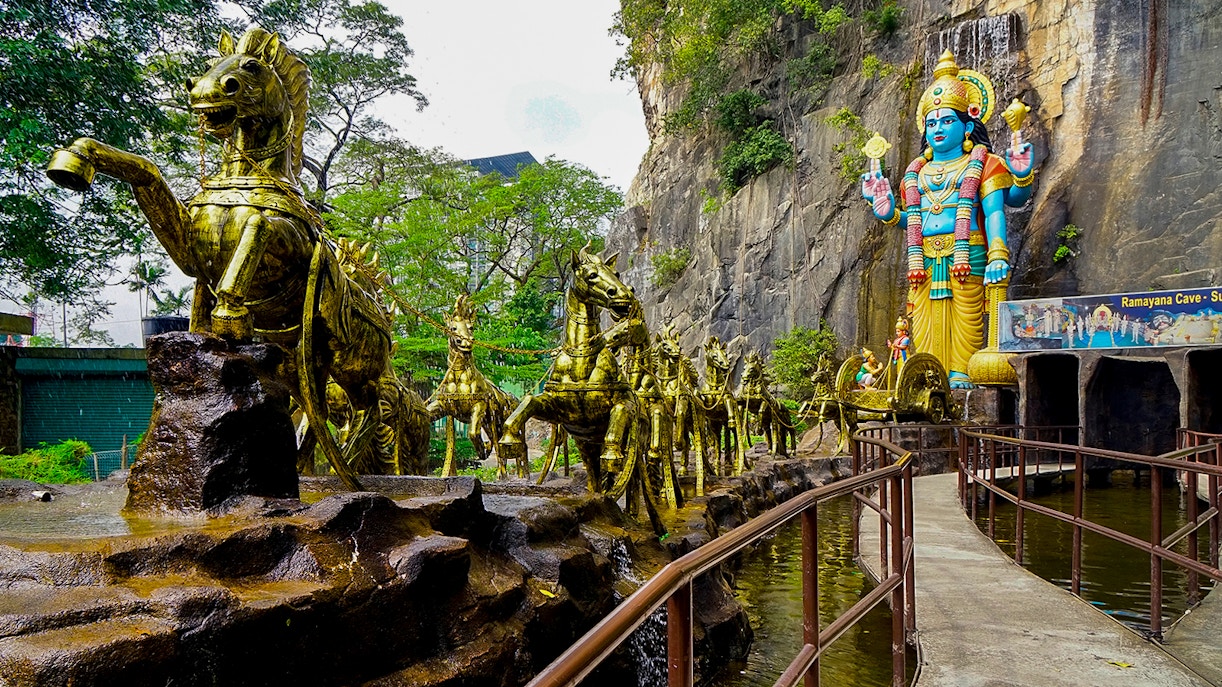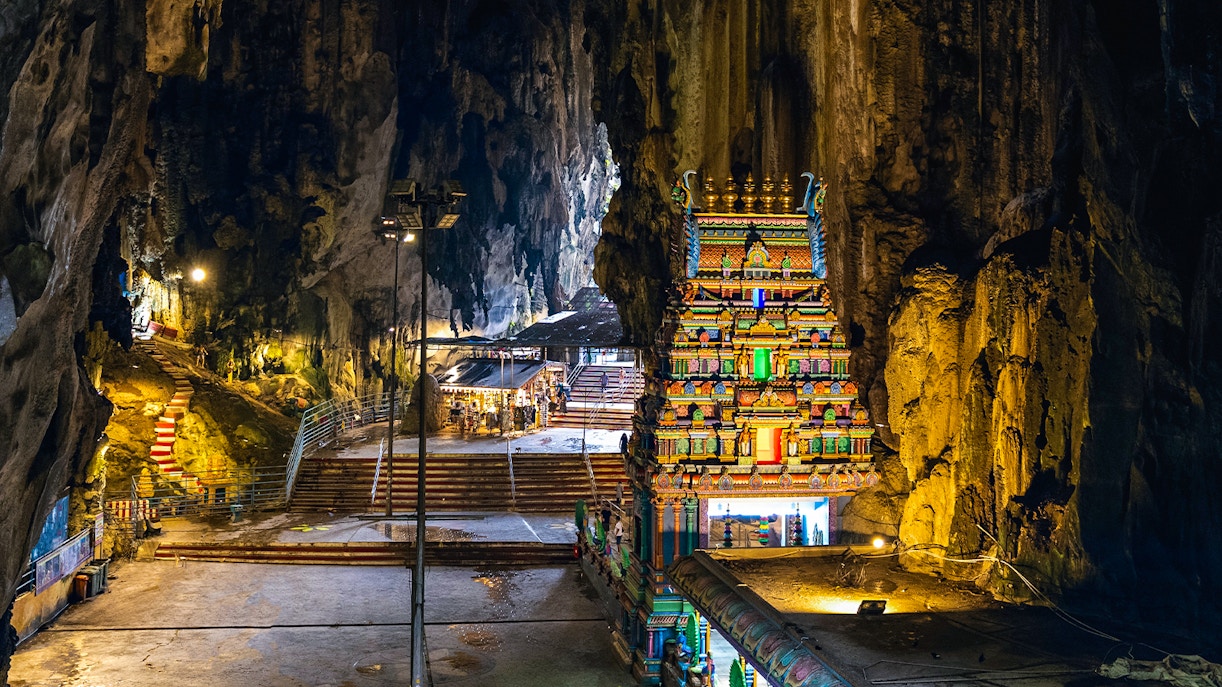Visiting during Thaipusam
The Thaipusam Festival, typically held between late January and early February, is the most intense and significant time of year at Batu Caves. It's a Hindu celebration dedicated to Lord Murugan, and Batu Caves becomes the heart of it in Malaysia.
Thousands of devotees gather to perform acts of penance. Some carry kavadis (ornate, heavy structures), others pierce their skin, tongue, or cheeks as a sign of faith. The atmosphere is electric, emotionally charged, and very much alive with chants, drumbeats, and processions.
Processions usually begin from the Sri Maha Mariamman Temple in Kuala Lumpur’s Chinatown and travel roughly 11 km to Batu Caves, arriving in the early hours of the festival day. Celebrations typically last three days, but the main crowd peaks on Thaipusam day itself.
Should you go?
That said, it’s not for everyone. The crowds are enormous, traffic around the site is heavy, and walking space is limited. Accommodations nearby often sell out or charge more, and food stalls pop up everywhere. If you’re someone who thrives on cultural immersion and can handle a bit of disorder, it’s worth experiencing at least once. But if you're looking for a calm, reflective visit, it's better to avoid these dates.



